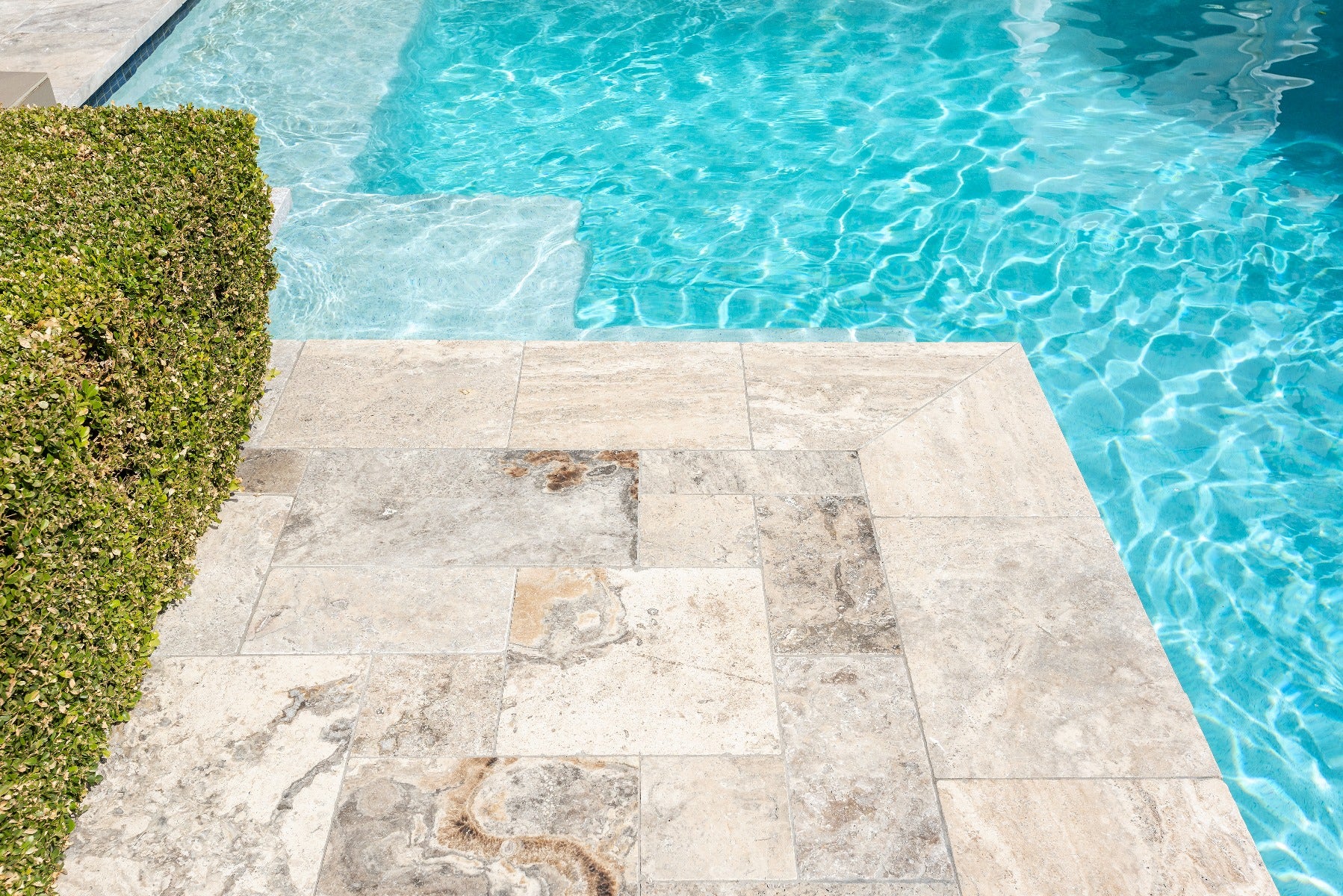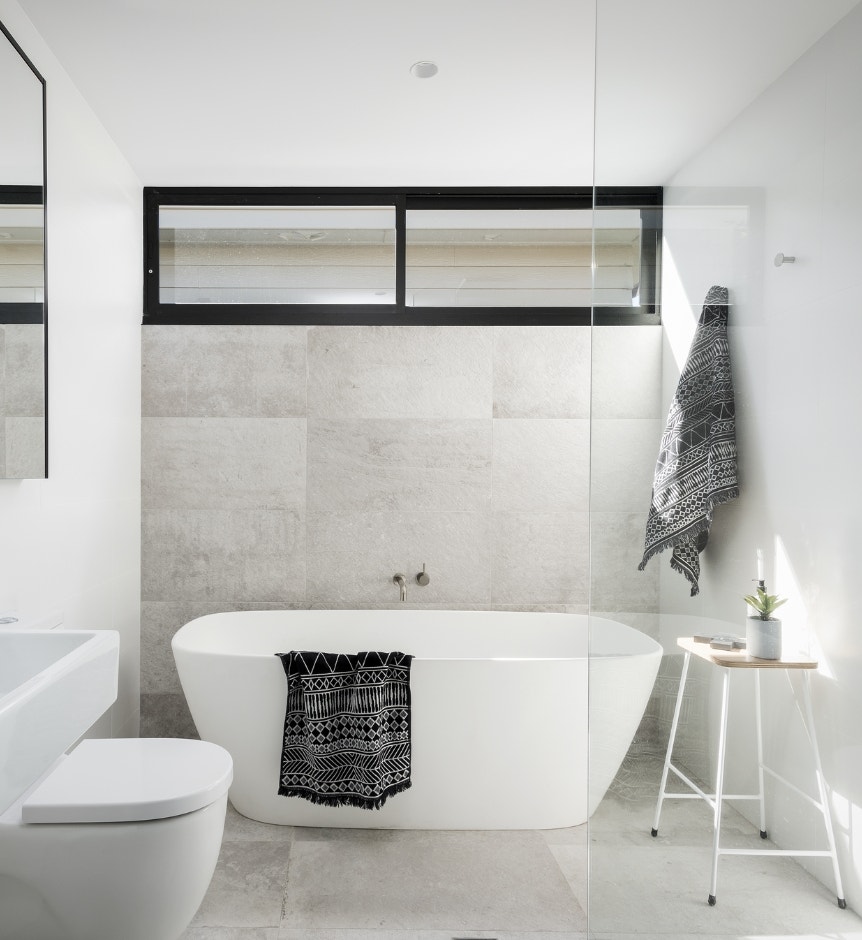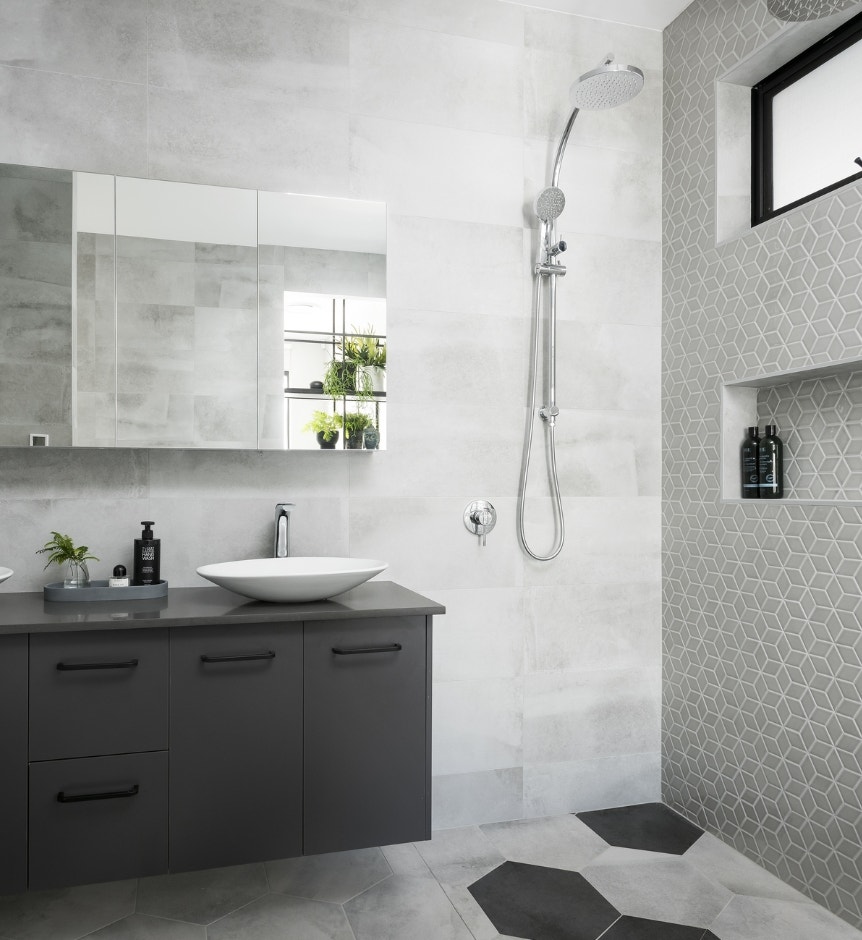Articles
Travertine vs Marble: the benefits and differences
08.03.23
Travertine and marble are natural stones seen in construction for centuries. Some of the world's most famous structures, like the Taj Mahal and the Parthenon, have been constructed from marble.
Travertine is also found in famous locations like the Roman Colosseum and the Trevi Fountain.
Both materials have become popular in modern-day home design and construction. Marble offers a more classic, elegant style, while travertine is an earthier, rustic option.
What are the unique characteristics of travertine and marble, and how do you tell them apart? Understanding the differences between travertine vs. marble will help you make the best decision for your home project.


What are Travertine and Marble?
Travertine and marble are metamorphic rocks formed from tremendous heat and pressure deep underground. They begin as sedimentary rocks, transforming over time into the harder, denser materials we see today.
Travertine is a type of limestone commonly found in and around hot springs. It's made of calcium carbonate and other minerals, giving it beautiful swirls, veins, and patterns.
Marble, too, is a type of limestone but exposed to higher temperatures and pressure than travertine. It occurs naturally on mountains and hillsides, where much tectonic activity has occurred. Marble is made mainly of calcium carbonate but contains other minerals such as silica and iron oxide. This makeup gives marble its distinctive veins and swirls.
Travertine is commonly sourced from Turkey and Mexico, while Greece and Italy primarily produce and export marble.
Travertine and marble are popular for outdoor area pavers, indoor floor tiles, kitchens, bathrooms, and fireplaces. Travertine finishes vary from polished, honed and filled to tumbled and unfilled.
Marble's various finishes include polished, brushed, sandblasted, and acid wash. So when it comes to the travertine vs. marble debate for your project, plenty of options are available!
How can you tell the difference between Travertine and marble?
When considering travertine vs. marble, both have unique characteristics that differ in a few ways.
Travertine
- Colours range from soft greys, tans, and browns to deep reds and golds. These earthy tones will give your tiled area a natural look. Travertine tiles' pattern and colour variation are unique, meaning no two tiles look identical. Marble, on the other hand, often has contrasting colour veins running through a solid colour.
- Travertine has unique pitted holes, troughs, and textures, plus a distinctive veined pattern.
- Travertine tiles are easy to grip and walk on thanks to their naturally non-slip texture. Travertine also reflects heat, an added benefit for outdoor areas exposed to the hot Australian sun.
Marble
- Colours range from off-whites, golden creams, greens, pinks, greys, and black. Marble is known for its unique pattern, featuring streaks and swirls of various shades of cream or grey.
- Marble has a smooth, polished finish and reflects more light than travertine. The high gloss surface brings out the depth of colour and the stone's pattern. A simple way to tell marble and travertine apart is by looking at their surfaces - marble is smoother in texture.
- Marble's polished finish means marble feels cooler to the touch than travertine.
What are the uses for Travertine and Marble?
Travertine and marble are versatile materials with many potential uses inside and outside the home.
- Travertine is a durable and distinctive-looking stone, making it a popular choice for interior exterior and design. Travertine tiles are ideal for bathrooms, indoor flooring, pools, pool decks, patios, and walkways. They will offer a modern and stylish look to your home. Marble is used for the same indoor purposes, plus fireplaces and garden sculptures.
- Marble is highly durable, making it perfect for high foot traffic areas, like walkways and around pools. It is also highly resistant to heat and naturally drives away bacteria, making it ideal for kitchen countertops. However, chipping and staining is possible, so minimise the risk by properly looking after your marble. This stone conveys a classic and luxurious style. The elegance of marble is a worthwhile investment that can add value to your home
Travertine vs Marble: Frequently Asked Questions (FAQ)
What Is More Expensive, Marble or Travertine?
Generally, marble is more expensive than travertine due to its rarity and polished finish. The process of quarrying and cutting marble also adds to its cost. For example, polished marble tiles may cost up to 50% more than travertine tiles.Is Travertine Considered Natural Marble?
No, travertine is not a type of marble; it's a type of limestone formed from hot springs and limestone deposits. Travertine is formed differently and has different properties to marble.Is Travertine or Marble More Crack-Resistant?
Travertine is naturally porous, making it prone to cracking if exposed to extreme temperatures. Marble is generally harder and less likely to crack or chip under the same conditions.Is Travertine or Marble Better for Pools?
Travertine is generally the more popular choice for poolside pavers for several reasons. Travertine is
- Slip-resistant
- Reflects heat
- Less likely to be stained by chlorine
- Textured, allowing water to drain away quickly
However, as travertine is porous, it can be difficult to clean, and mold can start to grow. On the other hand, marble is less likely to stain and easier to keep clean, making it a viable option to use around pools.
When considering a travertine vs. marble pool deck, remember that sealing either stone is essential to getting the most life out of them.

Is Travertine or Marble More In-Style Right Now?
Generally speaking, both materials are equally popular for home renovation projects. If you want a luxe and sophisticated style, marble may be the better choice. If you're after a more natural, rustic look, travertine may be the way to go.
Make the right choice between Travertine and Marble
Both stones have unique characteristics that make them excellent options for various interior and exterior projects. Choosing between travertine and marble will depend on your needs and budget. Remember to also factor in the maintenance cost, as both materials require regular sealing and cleaning.
If you're looking for a cheaper option that doesn't sacrifice durability or comfort - travertine is the way to go. However, marble adds a classic and elegant look to your home design.
Here at Amber, we offer travertine and marble options that are perfect for your home building or renovation project. Come and talk to us today for the best advice and pricing.
We look forward to helping you create the perfect look for your home. Contact us on 1300 139 868 or find your local store here.



